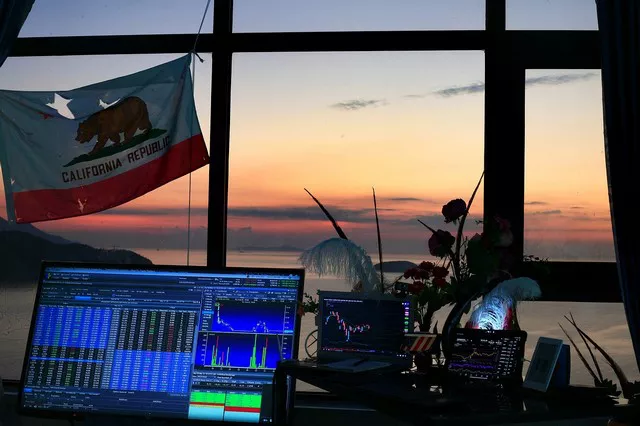Futures contracts are derivative financial instruments that allow investors to speculate on the future price movements of underlying assets such as commodities, currencies, equity indexes, and interest rates. While futures trading offers opportunities for profit and portfolio diversification, it also carries inherent risks that investors should be aware of. One common misconception is whether futures have unlimited risk. In this article, we’ll delve into the dynamics of futures trading and clarify whether futures contracts indeed have unlimited risk.
Understanding Futures Contracts
Futures contracts are standardized agreements to buy or sell a specific quantity of an underlying asset at a predetermined price (known as the futures price) on a future date (known as the expiration date). Futures contracts are traded on organized exchanges such as the Chicago Mercantile Exchange (CME), the Intercontinental Exchange (ICE), and Eurex Exchange, where buyers and sellers come together to transact.
Key features of futures contracts include:
1. Leverage: Futures contracts are leveraged instruments, allowing investors to control large positions with a relatively small amount of capital. The leverage inherent in futures trading amplifies both potential returns and potential losses. While leverage can enhance profit potential, it also increases the risk of significant losses if positions move against the investor’s expectations.
2. Margin Requirements: Futures trading involves trading on margin, where traders are required to deposit a fraction of the contract value (known as margin) to control a futures position. Margin requirements are set by futures exchanges and clearing firms to ensure that traders have sufficient funds to cover potential losses. Margin requirements vary depending on factors such as contract size, volatility, and market conditions.
3. Mark-to-Market: Futures contracts are marked-to-market daily, meaning that gains and losses on futures positions are realized and settled daily based on the current market price. Profits and losses are credited or debited to traders’ accounts daily, reflecting changes in the value of their positions. Mark-to-market accounting helps maintain transparency and accountability in futures trading and ensures that traders have adequate margin to cover potential losses.
4. Settlement Methods: Futures contracts can be settled through physical delivery or cash settlement, depending on the contract specifications and market practices. Physical delivery involves the actual delivery of the underlying asset upon expiration of the contract, while cash settlement involves the payment of cash based on the difference between the futures price and the spot price at expiration. Most futures traders prefer cash settlement to avoid the logistical challenges and costs associated with physical delivery.
Do Futures Have Unlimited Risk?
The notion that futures contracts have unlimited risk is a common misconception among investors, primarily due to the leverage inherent in futures trading. While futures trading does involve significant risk, it’s essential to understand that the risk of a futures position is limited by several factors:
1. Margin Requirements: Futures exchanges and clearing firms impose margin requirements to ensure that traders have sufficient funds to cover potential losses. Margin requirements act as a safety net, limiting the amount of leverage that traders can use and mitigating the risk of default or insolvency. Margin requirements vary depending on factors such as contract size, volatility, and market conditions. Traders must maintain adequate margin levels to avoid margin calls and potential liquidation of positions.
2. Stop-Loss Orders: Traders can implement stop-loss orders to limit potential losses and protect against adverse price movements in futures positions. A stop-loss order is a predefined order to sell a futures contract at a specified price level to limit losses if the market moves against the trader’s position. Stop-loss orders help traders manage risk and exit losing positions before losses accumulate to unacceptable levels. By setting stop-loss orders, traders can define their risk tolerance and control the maximum amount they are willing to lose on a trade.
3. Position Sizing: Proper position sizing is crucial for managing risk in futures trading. Traders should determine the appropriate size of each position based on their risk tolerance, account size, and trading strategy. Avoid over-leveraging or risking more than a small percentage of your trading capital on any single trade. By controlling position size and adhering to disciplined risk management principles, traders can limit the potential impact of adverse price movements on their overall portfolio.
4. Market Liquidity: Liquidity is another factor that limits the risk of futures trading. Liquid markets have sufficient trading volume and depth, allowing traders to enter and exit positions quickly and at desired prices. In liquid markets, price movements tend to be smoother and more predictable, reducing the risk of slippage and adverse price impacts. Traders should focus on trading liquid futures contracts with active trading volumes and tight bid-ask spreads to minimize execution risk and enhance trading efficiency.
Conclusion
In conclusion, while futures trading involves significant risk, the notion that futures contracts have unlimited risk is a misconception. The risk of a futures position is limited by factors such as margin requirements, stop-loss orders, position sizing, and market liquidity. By understanding and managing these risks effectively, traders can participate in futures trading with confidence and strive to achieve their investment objectives. It’s essential for traders to conduct thorough research, develop sound trading strategies, and adhere to disciplined risk management principles to navigate the complexities of futures markets successfully. While futures trading offers opportunities for profit and portfolio diversification, it’s crucial for traders to approach it with caution and diligence to mitigate potential losses and protect their capital.


